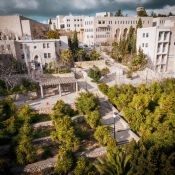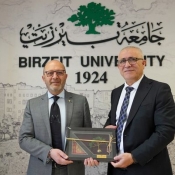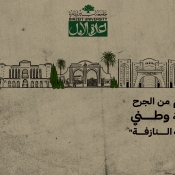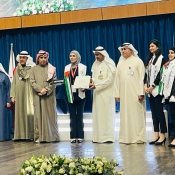History and Archaeology Department Conducts Archaeological Landscape Survey and Excavations in Jericho
From 4 – 20 January 2012, a team of faculty
members and students from the History and Archaeology Department at BZU and the
Institute of Archaeology at University College London (UCL) conducted the
fourth season of archaeological landscape survey and
excavations in the area of Khirbat al-Mafjar near Hisham’s Palace, north of
Jericho. This joint venture was organized in cooperation with the Palestinian
Department of Antiquities and was headed by Dr. Mahmoud Hawari from the BZU
Department of History and Archaeology.
The aim of this fieldwork and
research project is two-fold: to enhance the understanding of the palace
complex which dates back to the Umayyad Period (8th century) within
the context of its cultural and historical environment, and its link to the
contemporary urban settlement at Jericho; and to offer capacity building training
to BZU students in various fieldwork methods of archaeological survey and
excavation, as part of the efforts to revive the Palestinian Institute of
Archaeology at BZU.
During this fourth season of
fieldwork, the team resumed the landscape survey in the area extending southwest
of the palace, focusing on the water management system which once provided the baths
and agricultural estate to the east of Hisham’s Palace with water. Referring to
old maps, photographs, satellite imagery and archives, the team discovered and documented
various remains of an aqueduct that brought water from ‘Ain el-Sultan to the
palace, about 2 km long. During the previous seasons of fieldwork, another
aqueduct that channels water from ‘Ain el-Nuwei’meh in the west to the palace in
the east (about 5 km long) was discovered and documented. The latter includes two large
ruined bridges, a large reservoir and numerous sections of the aqueduct. Moreover,
the team conducted archaeological excavations revealing the remains of a mill (tahuna),
probably a flour mill, which was powered by water from the adjacent reservoir
of the aqueduct, about 700 m west of the palace.






